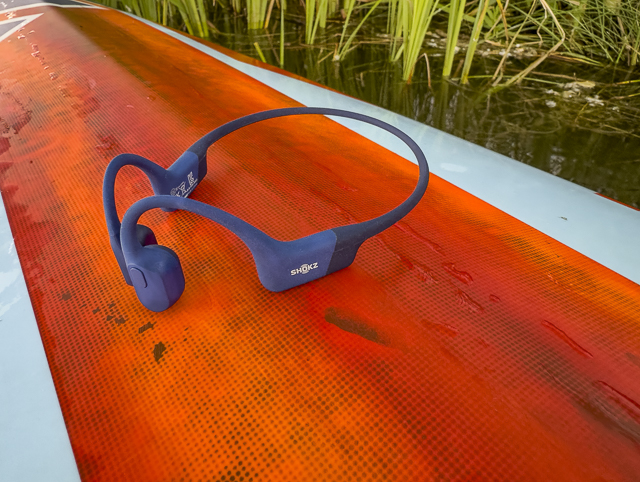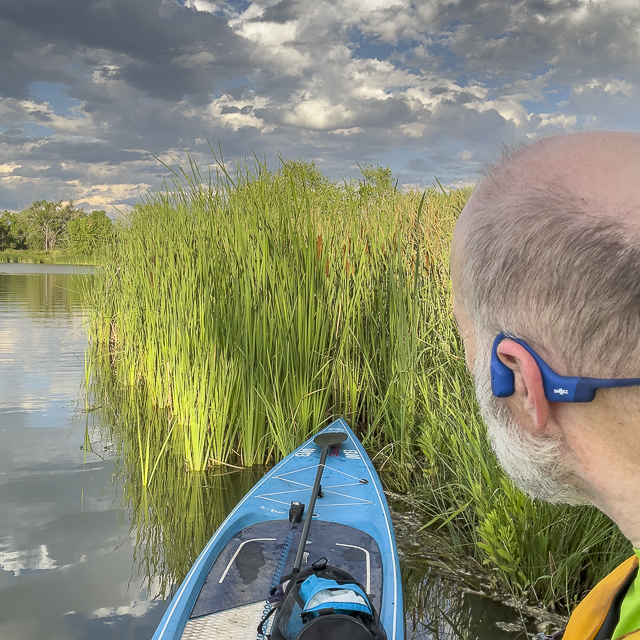I usually don’t listen to music in my paddling and training. I prefer sounds of nature. However, I tried some music in my recent Missouri River 340 races just for a couple hours and it was really helpful, especially, in the last day of race.

Benefits of music during long distance paddling
Listening to music during a long-distance endurance paddling race can offer several benefits to paddlers, enhancing their overall experience and performance. Here are some reasons why paddlers might choose to listen to music during such races:
- Motivation and Focus: Paddling in a long-distance race can be physically and mentally demanding. Listening to energetic and motivational music can boost morale, provide mental stimulation, and help paddlers maintain focus and determination throughout the race. Music with a strong beat can synchronize with paddling strokes, helping to establish a steady rhythm.
- Boredom Relief: Endurance paddling races can last for several hours, and paddlers might encounter stretches of repetitive scenery or monotonous conditions. Music can provide entertainment and break the monotony, making the race more enjoyable and less tedious.
- Mood Enhancement: The right choice of music can influence emotions positively. Upbeat and uplifting tunes can elevate mood, reduce feelings of fatigue, and provide a sense of enjoyment during the race. This positive mindset can contribute to better performance and endurance.
- Distraction from Discomfort: Long-distance paddling can cause physical discomfort and fatigue. Music can act as a distraction from any soreness or discomfort, making it easier for paddlers to push through challenging moments.
- Personal Motivation and Associations: Paddlers might have specific songs or playlists that are personally meaningful and associated with positive memories or achievements. Listening to these songs can evoke positive emotions and memories, serving as a source of inspiration and motivation to keep going.
- Maintaining a Steady Pace: Music with a consistent beat can help paddlers maintain a steady pace and rhythm, especially during portions of the race where maintaining a consistent speed is crucial.
- Psychological Benefits: Music has been shown to have psychological benefits, including reducing stress and anxiety. During a long and demanding race, music can help paddlers stay mentally resilient and focused.
Open ear bone-conducting headphones
During a paddling race you have to be aware of your environment all time – obstacles, buoys, boat and barge traffic. So, regular headphones are not recommended. Many paddlers in MR340 races use some sort of waterproof speaker system which is perhaps more suitable for kayak or canoe and group of paddlers who like the same music choice. However, there is another solution.
Open ear bone-conducting headphones are a unique type of headphones designed to transmit sound through bone conduction rather than through the air. Unlike traditional headphones that sit inside or over the ears, bone-conducting headphones rest on the cheekbones, just in front of the ears. They work by converting audio signals into vibrations, which are then sent through the bones of the skull to the inner ear. This process bypasses the eardrum, allowing the user to hear sound without obstructing the ear canals.
Advantages:
- Safety and situational awareness: One of the most significant advantages of open ear bone-conducting headphones is that they do not block the ear canal. This allows athletes to stay aware of their surroundings, including traffic noise, other runners, or potential hazards during outdoor activities. The open design helps maintain situational awareness, reducing the risk of accidents.
- Comfort and convenience: Since these headphones don’t go inside or cover the ear, they can be more comfortable during long periods of use. This is especially beneficial for athletes engaged in endurance sports like long-distance running or paddling. The lightweight design and secure fit make them less likely to cause discomfort or irritate the ears.
- Ear health: Traditional in-ear headphones can sometimes cause ear canal irritation or contribute to ear infections due to trapped moisture. Open ear bone-conducting headphones eliminate this risk as they do not come in direct contact with the ear canal.
- Stability during physical activity: Open ear bone-conducting headphones are designed to stay in place, even during intense physical activities. The secure fit ensures they won’t fall out or get displaced, making them ideal for sports like running, paddling, or cycling.
- Improved communication: With traditional headphones, it can be challenging to communicate with others during activities. Bone-conducting headphones leave the ear open, allowing athletes to hear and participate in conversations without removing the headphones.
Disadvantages:
- Sound quality: Compared to traditional headphones, the sound quality of bone-conducting headphones might not be as high. The open design means sound waves have to travel through the cheekbone to reach the inner ear, which can result in slightly reduced audio fidelity.
- Noise leakage: Since bone-conducting headphones don’t seal the ear canal, there can be some sound leakage. This means people nearby might be able to hear what the user is listening to, which could be a consideration for those who prefer privacy.
- Limited bass response: Bone-conducting headphones typically have weaker bass compared to traditional headphones. The vibration of bones is not as effective at reproducing low-frequency sounds, which might be a drawback for users who enjoy bass-heavy music.
- Wind noise: During activities like running or paddling, wind noise can interfere with audio quality. While some bone-conducting headphones have built-in noise-cancellation features, wind noise can still be a challenge, particularly during outdoor sports.
- Less immersive experience: For some users, the open ear design might feel less immersive, especially when compared to noise-isolating or over-ear headphones. This can be a personal preference, as some people enjoy being fully immersed in their audio experience
Despite some limitations, open ear bone-conducting headphones have found a niche among athletes and outdoor enthusiasts who prioritize safety and situational awareness while enjoying audio entertainment during their activities.
My experience with SHOKZ OpenRun headphones

I am experimenting with SHOKZ OpenRun headphones paired with my iPhone 14 pro. Since there are designed for running there are very light and comfortable, sweat resistance and splash proof. Sound quality is OK for my stand up paddling. Battery life is up to 8 hours. Pro version provides better sound quality and battery life up to 10 hours. After more paddling I will write a longer review. I am, especially, interested in listening of audiobooks or podcast.
I wouldn’t use any headphones on a river at night. On the Missouri River at nighttime I am navigating mostly by sound focusing on the sound of water. Buoys or wind dikes are pretty scary, but they are also quite loud.
What is your experience with listening to music during MR340 or other long paddling races? Are you using headphones or speakers?
You must be logged in to post a comment.